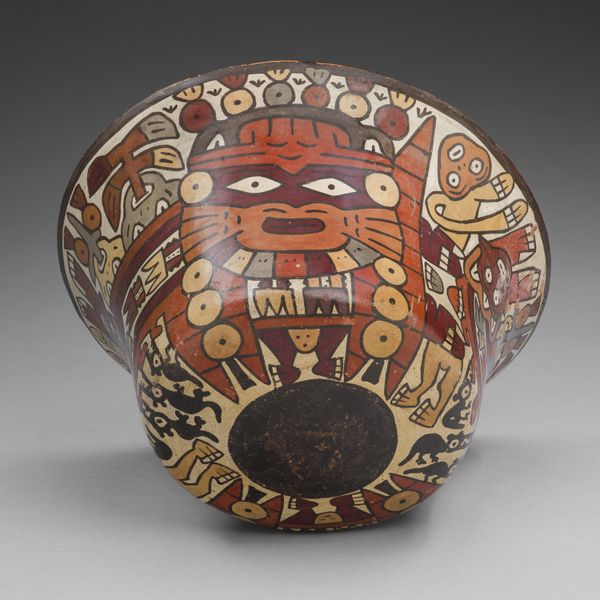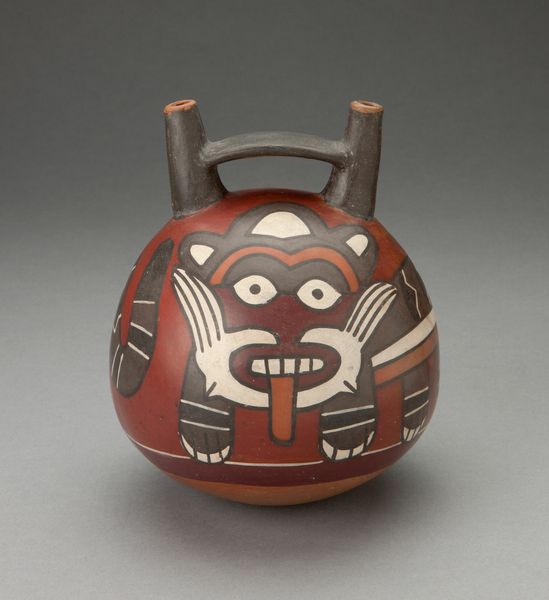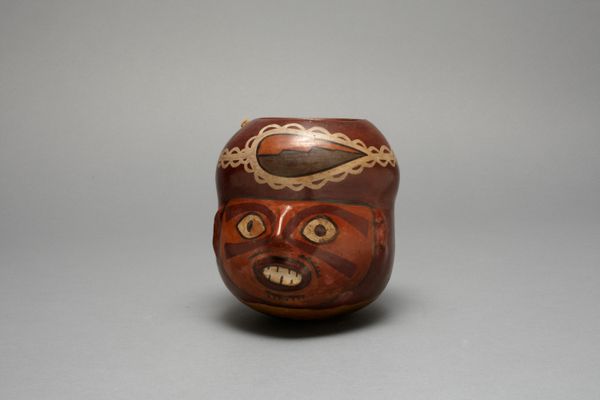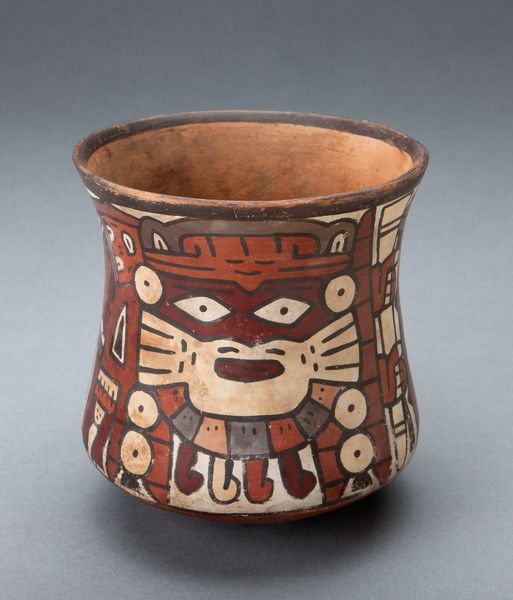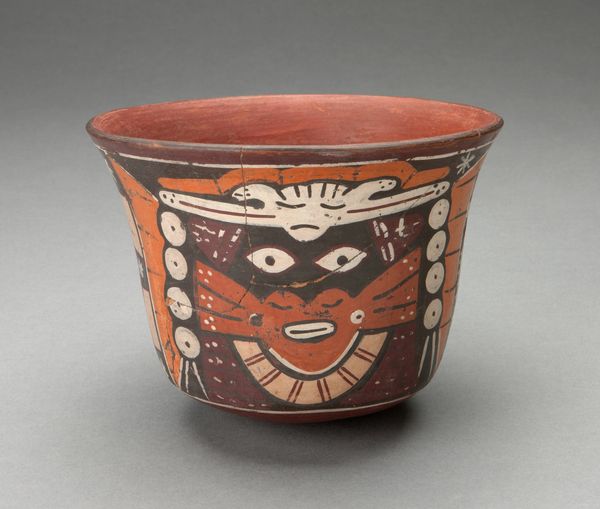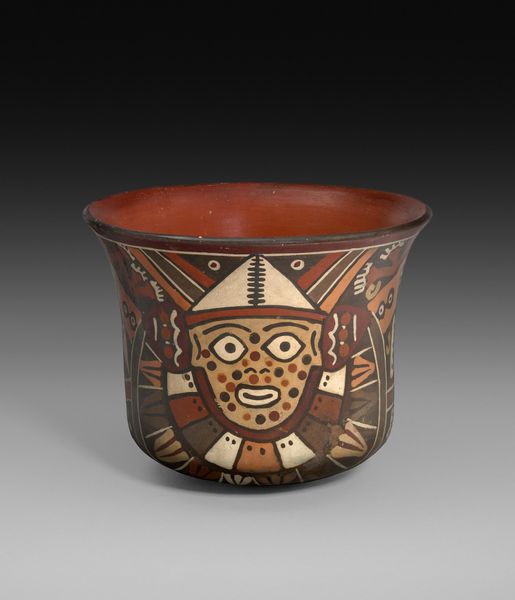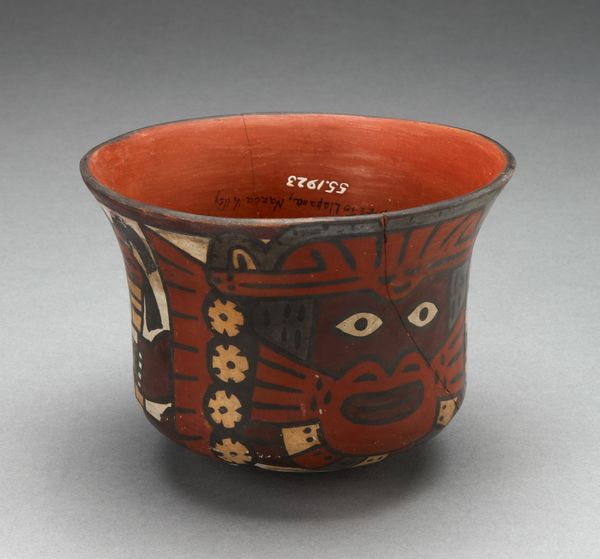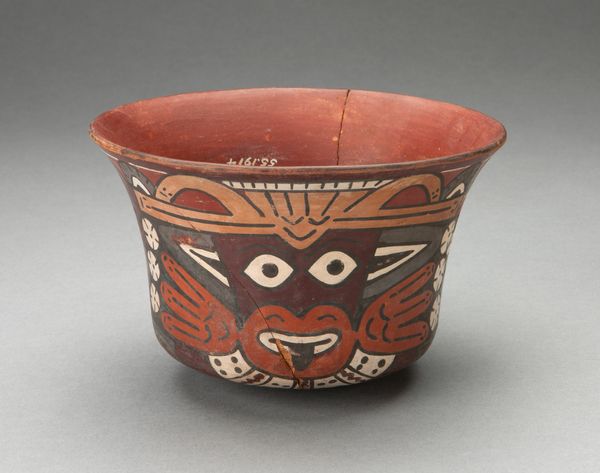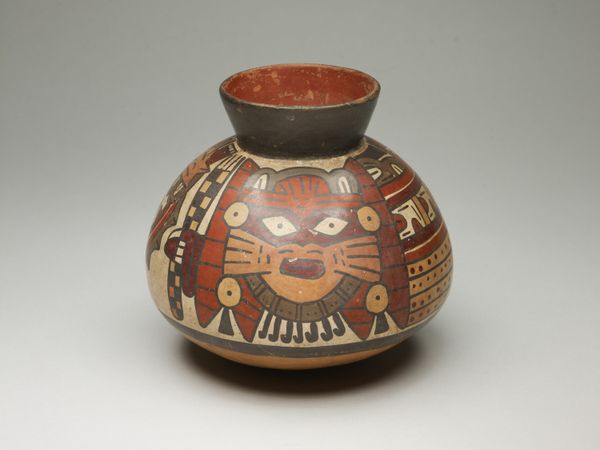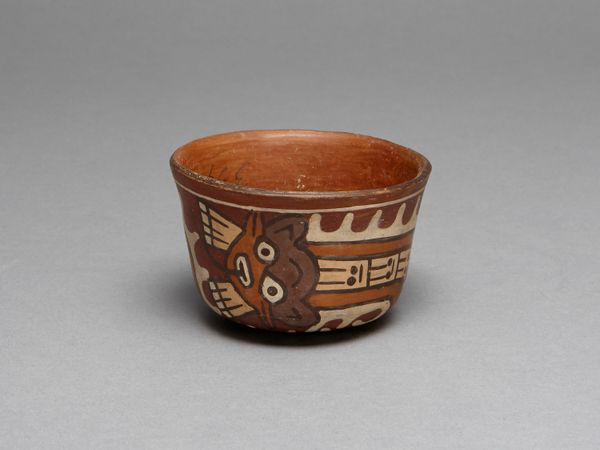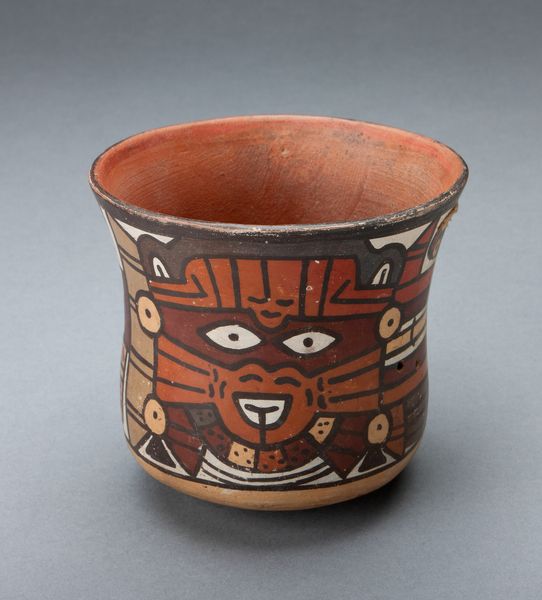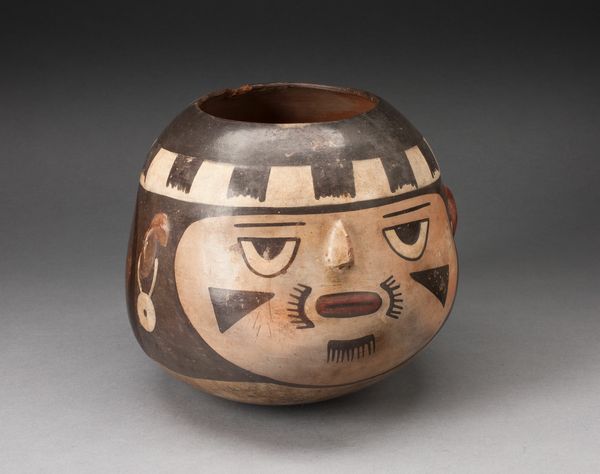
Cup Depicting a Ritual Performer Wearing a Feline Mask c. 180 - 500
0:00
0:00
ceramic
#
ceramic
#
figuration
#
indigenous-americas
Dimensions: 8.9 × 12.1 cm (3 1/2 × 4 3/4 in.)
Copyright: Public Domain
Curator: Here we have a Nazca ceramic cup, likely dating from around 180 to 500 AD. It's entitled "Cup Depicting a Ritual Performer Wearing a Feline Mask." The piece resides here at The Art Institute of Chicago. Editor: My first impression is how vivid the colors are for something so ancient. The stylized face is quite striking and immediately conveys a sense of ritual. Curator: Indeed. The Nazca culture flourished in ancient Peru, known for their sophisticated irrigation systems and especially their vibrant pottery. Much of what we understand about their society comes from studying pieces like this. We see these vessels reflecting deeply rooted religious beliefs. The imagery isn’t simply decorative. Editor: The feline mask immediately grabs the eye. Felines held a place of power, transformation and a vital link to the supernatural. The large eyes within the mask really deepen that sense of entering another state. Curator: Exactly. Transformation is a critical concept in many ancient belief systems. This performer, wearing the mask, might be seen as embodying the power and characteristics of the feline spirit. Moreover, it emphasizes the critical role the Shaman plays in indigenous societies by acting as an intercessor between humans and a very dangerous, but useful power source. Editor: The geometric patterns are interesting too. Circles, dots, radiating lines – they seem to emphasize the energy emanating from this ritual performance. Perhaps these patterns hold layers of symbolic meaning beyond our easy comprehension? Curator: Without a doubt, decoding the complete visual language would unlock more profound levels of the culture. But based on context of other works from that time we can observe shared stylistic consistencies and gain general understandings of cultural context. The overall effect, the cup and its role, likely solidified shared social and ritualistic values among the communities which utilized them. Editor: So we see how a simple drinking vessel can contain an entire world of belief and practice. What starts out looking beautiful quickly gives way to a study of humanity. Curator: Right, highlighting how indigenous artistry becomes deeply embedded in cultural and sociopolitical practices of power that shape and organize society. Editor: I’ll never look at ancient pottery the same way again.
Comments
No comments
Be the first to comment and join the conversation on the ultimate creative platform.
